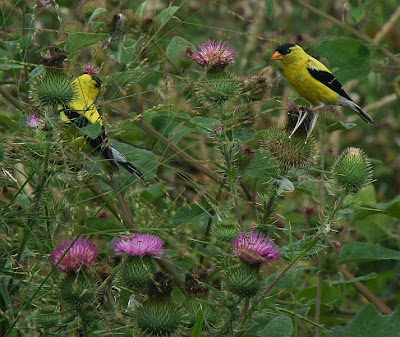Poisonous: White Snakeroot contains the toxin tremetol. When the plants are consumed by cattle, the meat and milk become contaminated with the toxin. When milk or meat containing the toxin is consumed, the poison is passed onto humans. If consumed in large enough quantities, it can cause tremetol poisoning in humans. The poisoning is also called milk sickness, as humans often ingested the toxin by drinking the milk of cows that had eaten Snakeroot.
During the early 19th century, when large numbers of European Americans from the East, who were unfamiliar with Snakeroot, began settling in the plant's habitat of the Midwest and Upper South, many thousands were killed by milk sickness. Notably, milk sickness was the cause of death in 1818 of Abraham Lincoln's mother. http://en.wikipedia.org/wiki/Ageratina_altissima
August 18th, 2011
August 18th, 2011
September 11th, 2011
During the early 19th century, when large numbers of European Americans from the East, who were unfamiliar with Snakeroot, began settling in the plant's habitat of the Midwest and Upper South, many thousands were killed by milk sickness. Notably, milk sickness was the cause of death in 1818 of Abraham Lincoln's mother. http://en.wikipedia.org/wiki/Ageratina_altissima
August 18th, 2011
August 18th, 2011
September 11th, 2011













































